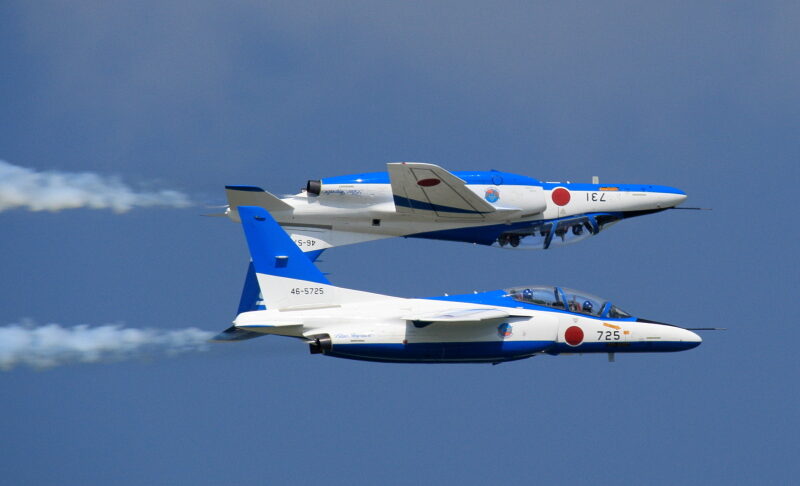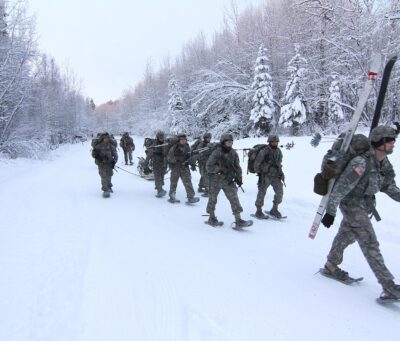The United States, in its accelerating competition with the People’s Republic of China, faces an adversary with a superior defense industrial capacity. Shipbuilding alone is indicative of this broader disparity: the Chinese People’s Liberation Army Navy is the largest naval force in the world with 340 ships, and it is expected to boast 440 ships by 2030. [1] The U.S. Navy, on the other hand, has 298 ships – 202 fewer ships than the Chief of Naval Operations believes are needed to meet its existing operational requirements – and has struggled with consistent fleet growth, missing its growth targets by an average of 10 ships per year since 2016. [2] While U.S. spending on defense has been constrained by rising inflation, continuing resolutions in place of Congressional budgets, and depreciation, China has more than doubled its defense spending since 2010. [3] Many argue that since the overall dollar amount of the U.S. defense budget vastly exceeds the amount China spends, the United States still possesses a comfortable lead. This, however, is misleading; when accounting for differences in purchasing power and personnel costs, the Chinese defense budget accounts for some 87.45 percent of the U.S. budget. [4] China’s rapidly growing budget and capabilities are sustained by an energized domestic defense industrial base (DIB) and its military-civil fusion model of defense innovation. Conversely, the United States faces a dire situation: a 2022 report from the National Defense Industrial Association ranked the “overall health and readiness” of the U.S. DIB at 69/100, the “first failing grade in the Vital Signs series.” [5] Budgetary uncertainties and supply chain issues are among the causes of the declining health of the DIB. A robust and effective DIB is essential to support the United States’s most urgent strategic commitments, namely the readiness of its own military, the defense of Taiwan, and military aid to Ukraine. To build a DIB capable of shouldering this massive burden, the United States should work to construct a multinational DIB with various allied and partner states.
Cooperation with allies on defense acquisitions will fill strategic gaps and improve cohesion. U.S. allies have, in some instances, already begun to pivot to co-acquisition of defense capabilities. Most recently, Japan, the United Kingdom, and Italy have announced that they will merge their next-generation fighter aircraft programs. [6] The collaboration between U.S. allies on a sixth-generation fighter is a welcome development, but the absence of the United States from this partnership is a significant missed opportunity. While multinational research and development cooperation is likely to cut costs by eliminating redundancies and streamlining a unified program budget, the United States’s isolated development risks another program that is too expensive. In the 1990s, Congress decided to ban the export of the U.S.-made F-22 Raptor. Without the ability to sell the F-22 to allies and partners, the production scale of the fighter had to be limited, making the per-unit cost staggeringly high — somewhere between $137 million and $340 million. [7] [8] What began as a plan to acquire 750 F-22s ended with a fleet of 195 aircraft. [9] The fate of the F-22 was not a foregone conclusion; Japan had expressed interest in purchasing the fighter. [10] The Next Generation Air Dominance (NGAD), coincidentally meant to replace the F-22, risks repeating the same mistake. Coacquisition of sixth-generation aircraft among allies is a way to hedge against prohibitively expensive acquisition spending, not to mention that joint development is likely to accelerate development and cut research costs. Some might argue – as former U.S. Representative Dave Obey, who authored the amendment banning the export of the F-22, did – that such cooperation risks sensitive technology falling into the hands of U.S. adversaries. [11] While this concern is valid, the United States can selectively collaborate around this issue. The United States should cooperate only with countries that have advanced cybersecurity capabilities, and it should only acquire technology from foreign companies that meet its cybersecurity standards. Ultimately, a decision by the United States to condition DIB access and collaboration on adequate cybersecurity practices is likely to incentivize allies to improve their own cybersecurity capabilities, which will improve allied resilience to hostile cyberattacks in potential future conflicts.
Selective defense co-acquisition with allies and partners will help the United States solidify its edge in development and dominance of critical technologies at a time when it is quickly losing its technological edge over China. China has already surpassed the United States in high-tech manufacturing, while also becoming a major peer competitor in development of the technologies that will shape the next century: artificial intelligence (AI), quantum computing, semiconducting, biotechnology, and green energy. [12] The United States, which has recently had the advantage of technological dominance in warfighting capabilities, cannot afford to lose its edge. If China boasts technological capabilities equal or superior to those fielded by U.S. warfighters, the relative strength of the United States may be insufficient to deter conflict in the Indo-Pacific. For the United States to restore its technological advantage, it should selectively integrate defense industrial innovation with allies with whom it would be advantageous. Some U.S. allies have already signaled their willingness to collaborate along these lines. Japan, for example, announced in its National Defense Strategy issued on December 16, 2022, that it would strengthen its DIB by, among other measures, pursuing broader inter-allied transfer of defense technologies. [13] The Japanese Ministry of Defense plans to consider revisions to its standards that govern foreign defense capability sharing as needed to address “smooth transfer of defense equipment and technology of high security significance and international joint development in a broad array of fields.” [14] Japan and the United States co-developing emerging technologies would be a promising opportunity for both countries. Japan would gain a stronger domestic DIB, as its Ministry of Defense views international exchange of defense technology as a promising tool to achieve this. [15] The United States, meanwhile, would reap the benefits of Japanese technological prowess. Japanese firms lead the world in adoption of AI, and Japan’s economy ranks thirteenth in the world on the World Intellectual Property Organization’s 2022 Global Innovation Index. [16] [17] Other allies and partner states populate the upper echelons of the Global Innovation Index: the United Kingdom ranks fourth; the Netherlands ranks fifth; South Korea ranks sixth; and Germany ranks eighth. [18] By expanding allied and partner cooperation, the United States can take advantage of their diverse and powerful technology innovation bases. The combined high-tech manufacturing capability of the United States and its allies surpasses that of China. DIB integration will empower a U.S.-led coalition to establish an edge over China in the emerging technologies that will define the future of warfare.
In opening itself to defense industrial exchange with allies, the United States can gain an important source of leverage. The prospect of technology transfer could, in some instances, be used as an inducement for allies to better align themselves with U.S. strategic objectives. The United States faces two near-peer competitors, one of which is already engaged in a war which threatens the liberal world order. To effectively deter its adversaries, the United States must have a powerful international coalition at its back. To dissuade its allies from fence-sitting, the United States could use the allure of defense industrial cooperation as a stick-and-carrot: allies who fail to spend adequately on defense and contribute to joint deterrence initiatives may be denied opportunities for co-development and co-acquisition, while those who do prioritize defense can be rewarded with those opportunities. The United States could do this very easily by relaxing Buy American restrictions on Japanese goods with military applications, for instance. The Buy American Act mandates that “only manufactured articles, materials, and supplies that have been manufactured in the United States… shall be acquired for public use.” [19] In March 2022, the Biden administration issued a regulation which mandated that “75 percent of the cost of products procured by the [U.S.] government be made up of domestic components by 2029.” [20] Relaxing these restrictions on only Japan, in this instance, would signal approval of Japan’s commitment to significantly increase its defense expenditures and provide a material incentive for other allies to do the same. The stronger that U.S. allies are, the easier it will be for the United States to prioritize certain theaters over others. Relaxing or amending the Buy American Act would be no small task, despite its potential benefits. Both Democrats and Republicans are unlikely to undertake such an endeavor because of the political consequences. Increasingly powerful populist elements in both parties will argue that the Buy American Act protects American jobs and industry, and labor unions representing affected industries will likely wield their political influence to block such an effort. Selective relaxation, however, will avoid major job losses. By rewarding allies who increase their defense spending, the United States can grow the foreign market for its military industrial goods, necessitating increased domestic manufacturing. This effect would both create new jobs and strengthen the U.S. DIB by expanding its production scale.
Multinational defense development and acquisition collaboration will make domestic defense industrial firms less susceptible to adverse budgetary shocks. The domestic defense industry has relatively limited competition and is constrained by the vicissitudes of the federal budgeting process. The lack of competitiveness occurs largely because of the inherent structure of the market for defense contracts. There are incredibly high barriers to entry, and there is only one customer: the U.S. Department of Defense (DOD). Critics of DOD measures aimed at promoting greater competition are right to point out that, given the market structure, relying on smaller firms to produce important components is risky because of the ‘valley of death,’ the bridge between science and technology development, prototyping, and deployment. During that period, many small firms are at risk of going under because they will not have enough money to sustain themselves. The valley of death is compounded by the instability associated with continuing resolutions (CRs). CRs are used by Congress to temporarily fund the federal government while avoiding a shutdown, and they generally maintain the previous fiscal year’s funding levels across the federal government. CRs delay modernization efforts by creating uncertainty about the budget DOD will have for new programs, and they increase costs by overextending programs. [21] In fiscal year 2022, the 160-day CR resulted in a cost of $16.96 billion for DOD in lost purchasing power. [22] Additional delays can make the already daunting valley of death even more challenging for nascent firms, risking bankruptcy or requiring them to submit to acquisition by a wealthier firm. [23] However, a multinational DIB would give American defense contractors more opportunities for foreign contracts which would reduce risk and uncertainty, creating space for a more competitive DIB. Improving marketplace competitiveness and diversity will drive down costs, improve efficiency, and allow for greater innovation.
As the global competitive landscape becomes more complex, the United States needs a strong military backstopped by a resilient and flexible DIB to meet the challenges of competition with China and Russia. The U.S. military is ill-prepared for this challenge. The Heritage Foundation’s 2023 Index of Military Strength downgraded the overall scores, which reflect the capacity, readiness, and capability, of the Navy and Air Force, from marginal to weak and weak to very weak, respectively. [24] Both the Navy and Air Force will be pivotal in an Indo-Pacific theater conflict, and they must have the necessary force structure, readiness, and capability to deter such a conflict. Without a robust DIB to support modernization and simultaneously improve readiness across all warfighting domains, the U.S. deterrent is likely to fail. Problematically, a DIB that is too weak to support a strong deterrent is unlikely to have the capacity to support a prolonged war effort, particularly against a peer adversary. By including vital allies and partners in its DIB, the United States can simultaneously empower its domestic defense contractors while reaping the benefits of its allies’ innovative capabilities.
Eli Glickman ’25 serves as the President of the AHS chapter at the University of California, Berkeley, where he is majoring in Political Science and Economics.
—
Notes:
[1] “Military and Security Developments Involving the People’s Republic of China 2022,” U.S. Department of Defense, 2022, 52.
[2] Dakota L. Wood ed., “2023 Index of U.S. Military Strength,”The Heritage Foundation, 18 October 2022, 365, https://www.heritage.org/sites/default/files/2022-10/2023_IndexOfUSMilitaryStrength.pdf.
[3] “What Does China Really Spend on its Military?,” Center for Strategic and International Studies China Power Project, 28 December 2015, Updated 8 May 2023, https://chinapower.csis.org/military-spending/.
[4] Frederico Bartels, “The Known Unknowns of China’s Defense Budget,” The Heritage Foundation, 15 April 2020, https://www.heritage.org/defense/commentary/the-known-unknowns-chinas-defense-budget.
[5] “Vital Signs 2022: The Health and Readiness of the Defense Industrial Base,” National Defense Industrial Association, February 2022, 56, https://www.ndia.org/-/media/vital-signs/2022/vital-signs_2022_final.ashx.
[6] Sébastien Roblin, “How Denying F-22 Sales to Allies Led to a U.K.-Japan-Italy stealth plane project,” NBC News, 13 December 2022, https://www.nbcnews.com/think/opinion/japan-italy-uk-fighter-plane-will-challenge-us-defense-industry-rcna61378.
[7] Roblin.
[8] Brent M. Eastwood, “The F-22 Raptor Was Expensive, But It’s Worth Every Penny,” 1945, 29 August 2022, https://www.19fortyfive.com/2022/08/f-22-was-expensive-but-worthwhile/.
[9] Eastwood.
[10] Andrea Shalal-Esa “U.S. Lawmakers Said Exploring F-22 Version for Japan,” Reuters, 1 June 2009, https://www.reuters.com/article/us-lockheed-f22/u-s-lawmakers-said-exploring-f-22-version-for-japan-idUSTRE55102920090602.
[11] Roblin.
[12] Graham Allison et al., “The Great Tech Rivalry: China vs the U.S.,” Belfer Center for Science and International Affairs, December 2021, 2, https://www.belfercenter.org/sites/default/files/GreatTechRivalry_ChinavsUS_211207.pdf.
[13] “National Defense Strategy,” Japan Ministry of Defense, 16 December 2022, 35, https://www.mod.go.jp/j/approach/agenda/guideline/strategy/pdf/strategy_en.pdf.
[14] “National Defense Strategy,” 35.
[15] “Defense of Japan 2022,” Japan Ministry of Defense, 2022, 471, https://www.mod.go.jp/en/publ/w_paper/index.html.
[16] “Driving ROI Through AI: AI Best Practices, Investment Plans, and Performance Metrics of 1,200 Firms,” ESI Thoughtlab, 2020, 6, https://econsultsolutions.com/wp-content/uploads/2020/09/ESITL_Driving-ROI-through-AI_FINAL_September-2020.pdf.
[17] Soumitra Dutta et al., “Global Innovation Index 2022: What is the Future of Innovation-Driven Growth?,” World Intellectual Property Organization 15 (2022): 19, https://www.wipo.int/edocs/pubdocs/en/wipo-pub-2000-2022-section1-en-gii-2022-at-a-glance-global-innovation-index-2022-15th-edition.pdf.
[18] Dutta et al., 19.
[19] Buy American Act, 41 U.S.C. §8302(a).
[20] Bill Greenwalt and Dustin Walker, “How Biden’s ‘Buy American’ is Undermining the Arsenal of Democracy,” Breaking Defense, 3 May 2022, https://breakingdefense.com/2022/05/how-bidens-buy-american-is-undermining-the-arsenal-of-democracy/.
[21] Mackenzie Eaglen, “The Paradox of Scarcity in a Defense Budget of Largesse,” The American Enterprise Institute, 18 July 2022, 5, https://www.aei.org/research-products/report/the-paradox-of-scarcity-in-a-defense-budget-of-largesse/.
[22] Eaglen, 5.
[23] Megan Milam, “Continuing Resolutions Stifle Defense Innovation,” Anduril Blog, 18 January 2022, https://blog.anduril.com/continuing-resolutions-stifle-defense-innovation-d2919fca05dc.
[24] Wood ed., 533.
Image: “Japan air self defense force Kawasaki T-4 Blue Impulse RJST Calypso,” by Cp9asngf, retrieved from https://commons.wikimedia.org/wiki/File:Japan_air_self_de- fense_force_Kawasaki_T-4_Blue_Impulse_RJST_Calypso.JPG. This file is licensed under the Creative Commons Attribution-Share Alike 3.0 Unported license.



